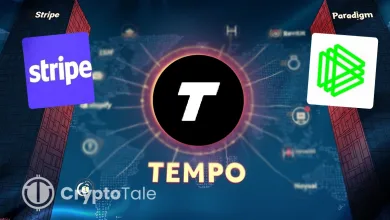Who Leads in 2025’s Crypto Treasury Model: DAO or Corporate?

Cryptocurrency treasuries have transformed from experimental reserves into large-scale institutional portfolios. As of 2025 Q4, public companies, decentralized autonomous organizations (DAOs), protocol foundations, and hybrid on-chain systems collectively oversee hundreds of billions of dollars. Each group balances liquidity, risk, and governance uniquely.
The latest data indicate that corporate Bitcoin treasuries are the most prominent in realized financial results. Foundation-led treasuries stand out for their disciplined and sustainable funding. Hybrid networks provide transparency and regular reporting. And DAOs, though massive in total value, still face challenges in diversification and execution. The question shaping this new era of digital finance remains: which model is winning in 2025?
Corporate Bitcoin Treasuries Expand Rapidly
Corporate Bitcoin adoption is expected to surge through 2025, supported by fair-value accounting rules and increasing institutional participation. According to the Bitwise Q3 2025 Corporate Bitcoin Adoption Report, 172 public companies now hold Bitcoin—a 38% increase in just three months. Forty-eight new entrants joined between July and September, pushing total corporate holdings above 1 million BTC, valued at approximately $117 billion.
Strategy Inc. (formerly MicroStrategy) remains the largest holder with 640,250 BTC, followed by MARA Holdings with 53,250 BTC. The value of Strategy’s portfolio produced a $9.97 billion profit in Q2 2025, thanks to new accounting rules that allow unrealized Bitcoin gains to appear in earnings.
Analysts interpret this momentum as a signal of institutional conviction. “Larger players are doubling down, not backing away,” said Rachael Lucas, an analyst at BTC Markets. Corporate buyers now accumulate roughly 1,755 BTC daily, nearly twice the rate of new mining issuance. Most purchases occur over the counter, which reduces short-term volatility but tightens supply over time.
Lucas said the shift represents “a long-term decision on digital assets as part of treasury strategy.” At the same time, Edward Carroll, of MHC Digital Group, noted that this wave of institutional accumulation “will likely cause a demand-supply imbalance and firm upward pressure on prices.”
The trend extends beyond Bitcoin. Several companies now hold Ether and Solana for strategic diversification. Meanwhile, Bitcoin exchange-traded funds attracted $2.7 billion in inflows during early October, providing mainstream investors with regulated access to digital assets.
Related: Saylor’s $77.4B Bitcoin Treasury Outpaces Banks and Nations
DAO Treasuries: Scale, Governance, and Diversification
DAOs remain central to on-chain finance, controlling billions in assets. However, performance varies across governance, diversification, and efficiency.
The top DAOs by Total Value Locked (TVL) as of late 2025 include Lido, Aave, and Uniswap.
- Lido dominates liquid staking with around $30 billion in TVL, offering staked ETH derivatives such as stETH that integrate widely across DeFi.
- Aave, the leading decentralized lending platform, manages about $41 billion in TVL, expanding through multi-chain deployments.
- Uniswap, the decentralized exchange pioneer, ranks third with about $6 billion in TVL and remains a leading DAO by treasury size.
- Beyond these, Polkadot, Sky (formerly MakerDAO), Arbitrum, Optimism, Bittensor, and ENS DAO each play influential roles within their niches, from stablecoin management to infrastructure governance and decentralized AI.
Uniswap’s treasury remains heavily concentrated in its native UNI token, creating significant volatility risks. To address this, a Treasury Working Group was formed in March 2024 to research diversification strategies. In May 2025, the Uniswap Foundation reported holding $53.4 million in cash and stablecoins, separate from the DAO’s larger token-based treasury.
Related: Uniswap Foundation Unveils DUNI to Boost DAO Legal Position
Meanwhile, Layer-2 treasuries demonstrate varied approaches. Arbitrum, with a large but ARB-heavy treasury, is actively diversifying into tokenized U.S. Treasurys and other real-world assets through its Stable Treasury Endowment Program. In contrast, Optimism funds its ecosystem through a more diverse treasury and directs sequencer revenue toward Retroactive Public Goods Funding.
The evolving DAO landscape demonstrates an increasing sophistication in treasury management, but challenges persist. Native token concentration and low governance participation are common hurdles. Many DAOs are now strategically allocating funds, including investments in yield-bearing assets, to stabilize their financial runway and pursue long-term sustainability.
Foundation Treasuries: Policy, Runway, and Control
Protocol foundations have become models of structured treasury management. The Ethereum Foundation (EF) set a new benchmark with its Treasury Policy, introduced on June 4, 2025. The framework limits annual spending to a fraction of total assets, maintains a 2.5-year operating buffer, and permits yield generation through audited DeFi platforms.
Related: Ethereum Foundation Deposits 2,400 ETH & $6M Stablecoins in Morpho
This marks a shift from passive holding to active, risk-aware management. EF’s structured approach provides predictable funding for research, client development, and grants, while maintaining transparency through regular public reports.
The Solana Foundation adopted a contrasting but equally deliberate approach. In 2025, it executed a series of discounted token placements with ecosystem partners, including Solmate Infrastructure, which acquired $50 million of SOL under vesting terms. These placements accelerated ecosystem expansion and validator growth, though they drew scrutiny over disclosure and concentration.
Foundation-run treasuries excel in stability and policy clarity. They operate like endowments—preserving core reserves while deploying measured risk capital for ecosystem development.
Hybrid Models: On-Chain Governance with Institutional Discipline
Polkadot and Cosmos Hub represent the most structured hybrid treasury systems. Polkadot’s OpenGov process combines on-chain referenda with working groups to manage operations. The Q1 2025 Treasury Report listed 33.5 million DOT (approximately $135 million) with a small surplus after accounting for inflation and network burns.
Cosmos Hub, meanwhile, funds its community pool through a staking tax and inflation, maintaining stable inflows to support projects and liquidity programs. In February 2025, governance approved a move to deposit excess USDC into Hydro, a yield protocol, to generate predictable income.
Both networks illustrate how decentralized governance can operate with fiscal accountability. Their budgets, transactions, and reports remain publicly auditable, setting a model for transparent on-chain financial management.
Tokenization Reshapes Treasury Strategy
Real-world asset (RWA) tokenization has become a defining force in treasury management this year. Tokenization reshapes treasury strategy by enabling real-time settlement, reducing counterparty risk, and lowering costs through automation. By converting U.S. Treasury bonds into digital tokens, it facilitates near-instant transactions, automates processes like yield payments using smart contracts, and expands global accessibility by creating borderless, 24/7 markets.
By mid-October 2025, the RWA market had reached an all-time high $33.91 billion, representing a 10% increase from the previous month. Private credit dominates with $17.6 billion, while tokenized U.S. Treasuries reached $8.3 billion.
BlackRock’s BUIDL fund leads this market with $2.82 billion under management and a 15% market share. On October 14, CEO Larry Fink announced that BlackRock is developing proprietary tokenization technology, referring to the initiative as “the next wave of opportunity” for traditional finance. Tokenized ETFs, he said, could help crypto-native investors transition into long-term retirement products.
This boom offers treasuries new, low-risk yield options. Both DAO and foundation treasuries now allocate stablecoin reserves into tokenized T-bills and money-market funds, generating returns without heavy exposure to DeFi volatility.
Converging Toward a Hybrid Future
Across all categories, convergence is accelerating. Corporations are adopting staking and tokenized yield instruments. Foundations are adding transparent on-chain dashboards. DAOs and hybrid systems are introducing councils, audits, and stablecoin portfolios to mirror institutional best practices.
Macro forces—such as Crypto ETF inflows, easing monetary policy, and the growing tokenization of traditional assets—are fueling a unified playbook. Furthermore, treasuries that combine crypto reserves, stablecoin liquidity, RWA yield, and transparent governance are becoming notable.
Corporate Bitcoin Treasuries
Definition: Corporate Bitcoin treasuries refer to the reserves of Bitcoin and other digital assets held by publicly listed or private companies as part of their official balance sheet or strategic reserve. These treasuries are managed in accordance with corporate financial governance and accounting standards, often benefiting from fair-value reporting rules that allow unrealized gains or losses to be reflected in earnings.
Purpose: They serve as a store of value, an inflation hedge, or a strategic financial asset. Corporations such as Strategy Inc. (formerly MicroStrategy) and Tesla use Bitcoin to diversify reserves and enhance shareholder value through digital asset exposure.
Key Traits:
- Centralized corporate governance and professional asset management.
- Exposure primarily to Bitcoin (and occasionally Ether or Solana).
- Strongest in realized financial results under modern accounting standards.
DAO Treasuries
Definition:
DAO treasuries are on-chain funds governed by decentralized autonomous organizations (DAOs)—community-run entities that operate through smart contracts and token-holder voting. These treasuries finance protocol development, grants, and ecosystem incentives, and are controlled collectively rather than by a centralized entity.
Purpose:
They embody decentralized financial management, using transparent, public wallets and open governance mechanisms to allocate resources within ecosystems like Uniswap, Aave, Lido, and MakerDAO (Sky).
Key Traits:
- Fully on-chain, transparent, and community-governed.
- Assets are typically dominated by native tokens, which can lead to concentration risk.
- High visibility but slower decision-making due to governance processes.
Foundation Treasuries
Definition:
Foundation treasuries are centrally managed reserves held by nonprofit organizations that oversee blockchain ecosystems, such as the Ethereum Foundation or Solana Foundation. These funds are used to support ecosystem growth, research, grants, and operations under defined financial policies.
Purpose:
They balance long-term sustainability and risk control, following professional treasury management practices similar to endowments. Foundations often maintain liquidity buffers, spending caps, and yield strategies through audited DeFi platforms or traditional instruments.
Key Traits:
- Managed by professional teams under formal policies and audits.
- Prioritize stability, predictable spending, and risk mitigation.
- Operate as bridges between decentralized networks and institutional finance.
Hybrid Models
Definition:
Hybrid treasury models combine decentralized governance with structured financial management, blending the transparency of DAOs with the discipline of foundations or corporations. Examples include Polkadot’s OpenGov and Cosmos Hub’s community pool, which use public referenda and working groups to manage funds with clear budgets and reports.
Purpose:
They aim to achieve institutional-grade accountability without sacrificing decentralization—offering transparent reporting, stable reserves, and predictable funding cycles.
Key Traits:
- On-chain transparency with semi-structured oversight.
- Regular public reports and budget planning.
- Strong alignment between community governance and financial discipline.
Final Words
Corporate Bitcoin treasuries lead with $117 billion in holdings and high fair-value earnings. Foundations offer a stable runway via treasury policies, buffers, and controlled DeFi exposure. Hybrid & DAO treasuries are enhancing transparency but face limitations in governance and liquidity.





